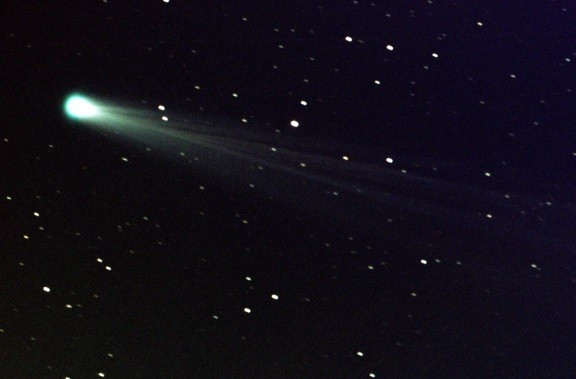Death of Ison: Comet of the Century to Fizzle and 'Break Up'

Comet Ison appears to be breaking up and looks unlikely to make it round the Sun in one piece, an astronomer has said.
Stephen Lowry, senior lecturer at the Centre for Astrophysics and Planetary Science School of Physical Sciences at the University of Kent Canterbury, told IBTimes UK that reports suggest the 'Comet of the Century' is breaking up.
"My current thinking is that it's not going to survive," he said. "New reports show rapid decrease in gas emissions from the comet and a rapid increase in dust. Now these are early reports so we could be wrong. But for me personally I don't think it's likely to survive."
Explaining why he believes Ison is breaking up, Lowry said that comets are made up of ice and dust. Astronomers can detect ice coming off the surface, and this ice drags off dust particles embedded within the nucleus of the comet.
"When we look at comets we can take different types of measurements - how much gas is coming off the surface and how much dust. Latest indications are that the amount of gas is rapidly decreasing and the amount of dust is rapidly increasing, and that points towards degradation. It's blowing itself apart and what we're seeing is a massive, massive increase in dust."
Ison is due to enter perihelion - the point where it is closest to the sun's surface - on 28 November, however ground telescopes will not be able to see this.
"We can do it from space but as we get a chance to analyse the data then we should hear a little more about what's happening over the next day or two," Lowry said.
"The comet may yet continue going around the Sun or may completely fizzle out to the point where we can't see the tiny dust particles anymore."
Huge disappointment?
Lowry said the death of Ison is not all bad news.
"It's exciting and not necessarily a bad thing because one of the interesting things about this type of comet is that it's the first fresh so-called sungrazer comet to be discovered so early.
"[Sungrazers are] a special class of comet that come very close to the Sun ... It's an opportunity for us to figure out how comets are built. We don't really know how comets are built and what their internal structures are like. So by studying sungrazing comets that have a high possibility of splitting then we can get some insight into the nature of the interior."
He said there may be various types of comet - which are either tightly bound or loose rubble pile structures. By breaking up, it indicates that Ison was a looser structure that came together gently by gravity.
Ison was discovered in September 2012 by Vitali Nevski and Artyom Novichonok, Russian Astronomers from the International Scientific Optical Network. Lowry said this was extremely far in advance, so astronomers across the globe had plenty of time to prepare for its arrival.
"It was found about 6.5 astronomical units from the Sun. One astronomical unit is the Earth-Sun distance. So we had plenty of time to mobilise all the ground-based telescopes and observatories.
"The large professional telescopes run on six month cycles and you have to formally apply for time and compete for access. So because we discovered it so far out, we've had all this time to prepare proposals and submit them. You rarely get that opportunity.
"With advances in technology, this is probably the most sophisticated comet observing campaign that there's been.
"A comet like this doesn't come around often so every time one does there have been radical advances in technology and observing techniques, so we're applying all the new technology and techniques to this potentially special comet."
What next?
Astronomers have no idea when the next stargrazing comet will come into view.
"It's impossible to tell. These things come in very randomly very quickly and from any direction. And we just don't know.
"The reason is that this type of comet is a long-period comet. The overall period of Ison is about 600,000 years, but other long-period comets can have orbital periods of several million years. They tend to come in very quickly from the Oort cloud from any direction, so we don't get much time to mobilise the campaign.
But there's another type of comet called short-period comets and they orbit the sun at regular intervals that can be around 10 years to a few hundred years, so we can predict their orbits much better. But with the long period comets, we just don't get to do that."
"Who knows, in a few years' time we might get to observe another one."
Read more:
Comet of the Century: Ison Could Hold Clues to Life on Earth
© Copyright IBTimes 2025. All rights reserved.






















